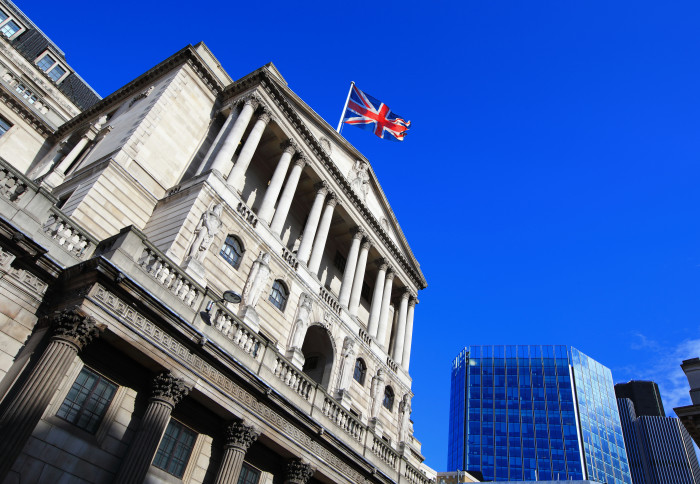Could the UK be set for negative interest rates? Views from Imperial's experts

The current Bank of England interest rate is 0.1%
UK interest rates are currently at record lows of just 0.1% but could they soon turn negative?
The Bank of England’s Monetary Policy Committee (MPC) - made up of nine members including Imperial's Professor Jonathan Haskel - are responsible for setting the base interest rate.
This week they will make their next announcement on the interest rate level and there has been much speculation about whether they could set a negative rate for the first time in their history.
We asked academics from Imperial College Business School, whether this could happen and what impact it could have:
Will the Bank of England set negative rates?

David Miles is Professor of Financial Economics at the Business School, and a former member of the Bank of England’s MPC.
Professor Miles said: “I am slightly sceptical about whether taking interest rates into negative territory would be the most sensible thing to do.
“The message that’s coming back very strongly from financial institutions and banks, is ‘this is messy, difficult and will make life hard for us’.
“I think there’s mixed-evidence inside the Bank of England about how effective negative rates would be, so on balance you probably couldn’t get a majority on the Committee to vote for it, at least not now.”
Dr Cláudia Custódio is Associate Professor of Finance at the Business School. Dr Custódio said: “It is hard to say if the UK will now follow other economies by setting negative rates but it may be a necessary stimulus measure to boost the economy if the Bank of England anticipates poor economic conditions ahead.
"Negative interest rates make it less expensive to borrow and therefore, consumption and investment on the side of households and firms are incentivised. This can be important to get the economy going again after the strong negative impact of the pandemic."
How would negative rates affect banks?

Dr Custódio: "In theory, a negative rate environment could see banks pay borrowers for taking loans and depositors charged for holding money."
Professor Miles: "If banks were to charge customers to deposit money, I think customers would soon get fed-up and it would sour that relationship. I think most banks would say they’re not going to do that.
"The banks would then get squeezed by not being able to pass on a negative interest rate to their depositors and so reduce their cost of funding.
"That would limit their ability to pass negative interest rates on to the people that have borrowed from them.
"There's a question of whether you try to force banks to pass it on and squeeze their profitability, which may not be the most sensible thing to do in a world in which they may find they have some bad debts coming down the road anyway, due to the economic uncertainty caused by the pandemic.
"Why would you want to erode their strength when they’re just about to be tested by bad debts picking up?
"If you do damage the banking system to some extent with negative rates, set by the Bank of England, that could have a more negative impact on overall economic conditions than the marginal positive benefit of some companies being able to borrow a little more cheaply."
How would it impact households and businesses?
Dr Custódio: "The possibly good and intended consequence of this policy is a boost in demand in the short run, so that the economy can grow.
“As it is cheaper to borrow, households are expected to consume more and this should get the economy going again. But a potential issue is that it disincentives households to save, which was already at a historically low level prior to the lockdown.
“With negative rates, businesses would be expected to invest more in the short run because their cost of capital is lower. But In the long run, short saving rates might compromise investment.
"Another unintended consequence might be excess leverage on the side of households and firms (because borrowing is less expensive and investors may want to leverage their returns due to low rates), which might compromise financial stability due to excessive risk.
Has it been tried in other countries and was it successful?

Dr Custódio: "Following the financial crisis in 2007/8, other economies in Europe responded to a sluggish recovery by setting negative rates. Japan has also had negative rates for four years.
"It is not yet clear whether a negative interest rate economic environment is sustainable for a long period of time, but again in Europe we have seen this going for more than six years now."
Professor Miles: "A positive view might say it hasn’t done a huge amount of damage in the Euro area but it hasn't exactly generated a splurge of new investment either. The UK unemployment rate has been consistently lower than the Euro area for a long time and negative rates didn’t dent that gap at all.
"I think in some ways the best you can say about the European Central Bank experiment is it hasn’t been a disaster but it certainly hasn’t generated a strong economic recovery and has left the average unemployment rate well north of where the UK unemployment rate is."
Article text (excluding photos or graphics) © Imperial College London.
Photos and graphics subject to third party copyright used with permission or © Imperial College London.
Reporter
Stephen Johns
Communications Division